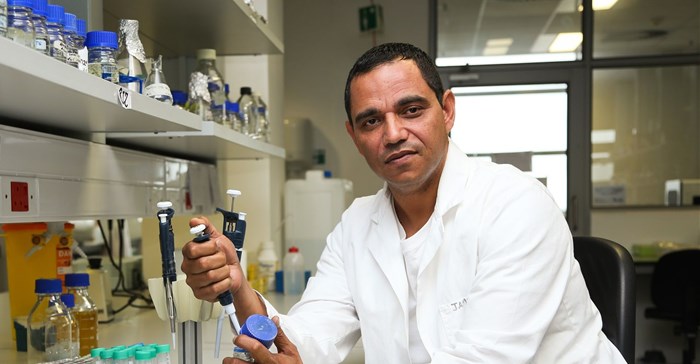






In 2011 a group of UWC researchers from the Biotechnology Department in the Science Faculty began searching for ways to improve these results. Dr Ashley Pretorius, Dr Marius Belmondo Tincho and other participating researchers reasoned that since the antimicrobial peptides (AMPs) – peptides that are part of the body’s immune defence system – had to first bind with certain viral proteins to attempt to neutralise the virus, this could be exploited to detect the virus, or specifically p24, one of the earliest HIV markers following infection.
The researchers used a technology called site-directed mutagenesis to improve the binding affinities of the top-ranked AMP to ensure a stronger binding to HIV proteins gp120 (for therapeutic purposes) and p24 (for diagnostic purposes).
The AMPs were then sent to Medical Diagnostech to develop a commercial diagnostic kit.
Gold nanoparticles were employed for a more accurate, convenient and easy visualisation of the test results. The kit is the first of its kind to make use of peptide (aptamer) technology rather than the traditional antibody technology.
The project has been expanded to include therapeutics as it was shown that several of the AMPs can neutralise HIV as well as inhibit the growth of several bacteria of medical importance, specifically those that have become antibiotic resistant.
Two MSc projects and one PhD project, resulting in two publications, as well as filing an international patent to protect the intellectual property produced in the project are among the results of the project, which is still in its pre-commercialisation phase.
The project also involves Professor Mervin Meyer from the UWC Nanotechnology Innovation Centre, King Abdullah University of Technology, Saudi Arabia, and Medical Diagnostech. The Technology Innovation Agency provided funding for the project.